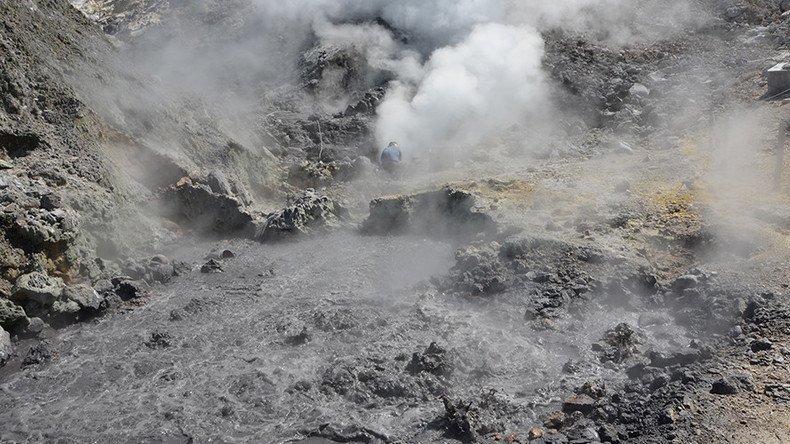Set to blow? Supervolcano Campi Flegrei reawakening near Naples, could hit 500,000 people

An Italian supervolcano is showing signs of reawakening, with any eruption potentially affecting half a million people, scientists say. The volcano is located across the Bay of Naples from the famous Vesuvius, which saw one of the most destructive eruptions in history.
Campi Flegrei, or the Phlegraean Fields, is a large volcanic area located in the metropolitan area of Naples, one of the most densely-inhabited areas in the world, with over 3 million people. The 13km-wide ‘caldera’, a large cauldron-like depression, lies mostly underwater and has 24 craters and volcanic edifices.
A recent study led by Italian and French scientists from the National Institute of Geophysics and Volcanology in Bologna states that, “Of the several quiescent calderas worldwide, Campi Flegrei has recently shown among the clearest signs of unrest.”
The research was released on Tuesday in the journal Nature Communications.
The study says that there is a certain threshold beyond which magma could trigger the release of fluids and gases at an increased rate.
“Hydrothermal rocks, if heated, can ultimately lose their mechanical resistance, causing acceleration towards critical conditions,” Giovanni Chiodini, a researcher, told AFP.
It’s not clear exactly if or when the volcano will erupt, according to Chiodini, but if it does, it “would be very dangerous” for the local population.
“The presence of more than half a million people living in the proximity of the [Campi Flegrei] caldera makes this situation particularly challenging for local authorities and other decision-makers,” the study said.
The dense population at risk "highlights the urgency of obtaining a better understanding of Campi Flegrei's behavior," Chiodini added.
Campi Flegrei was formed some 40,000 years ago, spewing out dozens of cubic kilometers of magma, rock and lava. One theory claims that the eruption was so large it led to the extinction of the Neanderthals.
The last eruption of the supervolcano took place back in 1538, but was much smaller in scale. The blast did, however, create a new hill – Monte Nuovo.
Since 2005 scientists have been detecting an increase of low-level activity and heating, as well as ground and magma deformation in the area. In 2012 the status of the volcano was changed from ‘green’ (quiet) to ‘yellow’ (scientific attention).
"These areas can give rise to the only eruptions that can have global catastrophic effects comparable to major meteorite impacts," Giuseppe De Natale, head of a project to monitor the volcano, told Reuters back in 2012.












